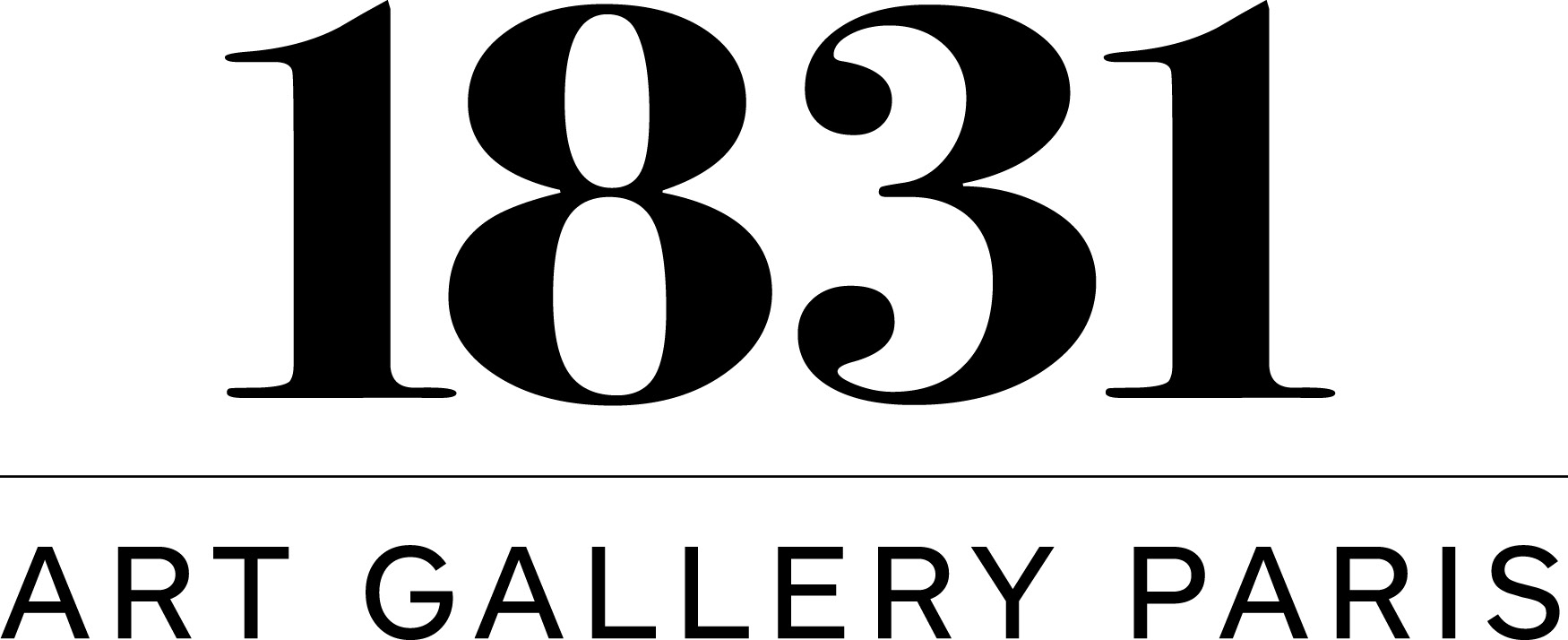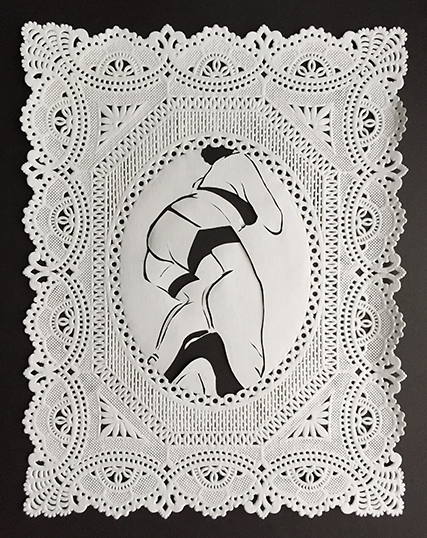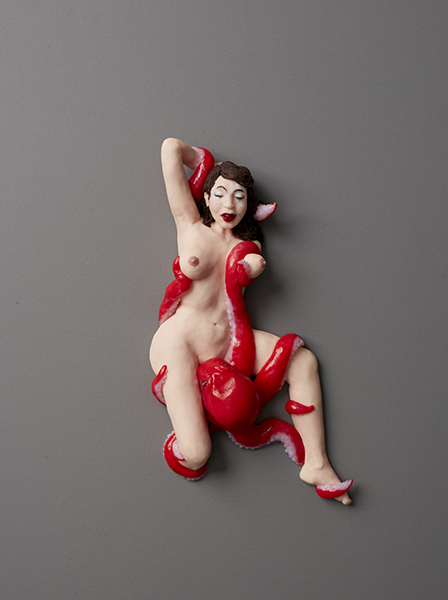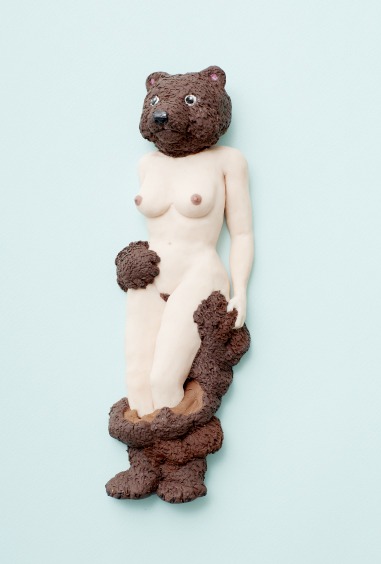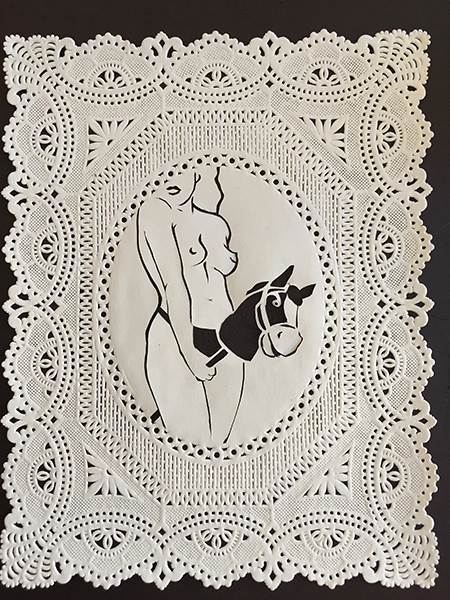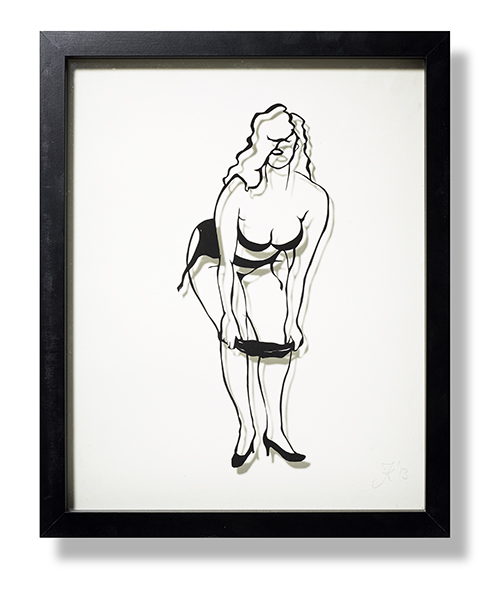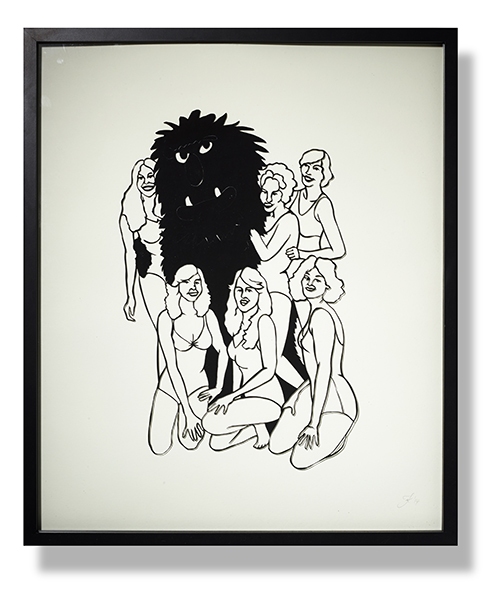Joséphine Kaiser
(1974 -)
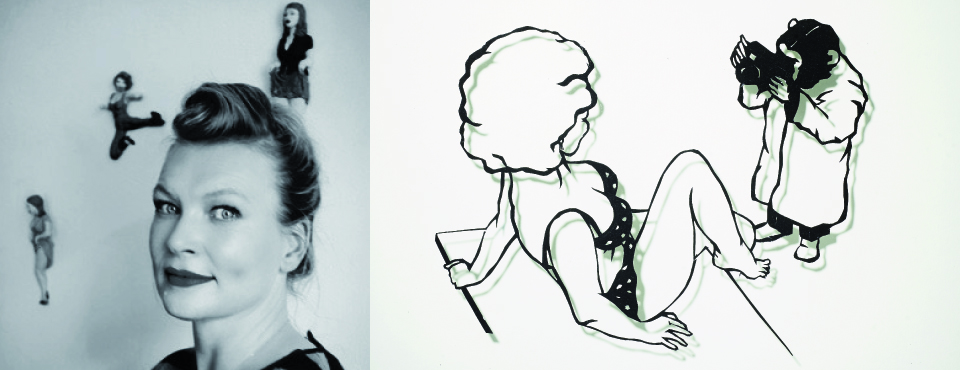
German plastic artist
Josephine Kaiser was born in East Berlin in 1974. She graduated from the Munich City School of Design in 1996.
Kaiser has been working with modelling clay since 1995 and has been making paper-cuts since 2011. She has been present at various fairs, single and group exhibitions in Germany and abroad. She currently lives in Munich, together with Ransome Stanley and their two children.
“What do you see when you stare into space? Where do you go in your dreams? Where does your mind take you when it wanders? Let’s follow the white rabbit down the rabbit hole and find out…
We are sucked down inside a vortex of rushing tulle, swirling hair, smacking latex and lukewarm leather, plunged downwards until we are spat out at the other end, onto the limbo of your soul, where Fräulein Josephine Kaiser is making portraits. The dust is washed from your eyes as a flood of associations gushes through your brain. Finally, your superego is drenched from head to toe, facing Diva Divine, Amy Winehouse, Catwoman, and several pin-up girls, who are posing under the hands of Josephine Kaiser in a fibbing finesse. You have seen all of these little gestalts before, but you don’t remember where or when. Although they’re just sculptures formed in high-to-low relief, their bodies seem warm. Your eyes meet, and they whisper a secret pact into your ear: “I won’t tell on you – we’re the same.”
Josephine Kaiser plucks your complexities, your fantasies, your stories, your sex, your love, and your desires from the depths of your soul and sedates them on her operating table, where she skims your heart layer by layer like a surgeon until her plastic art is complete. She builds her sculptures in the art of intarsia using Fimo, a dough-like mass that hardens when kiln-fired. Fräulein Kaiser bakes her 6 – 12-inch-tall figurines in her own kitchen oven. The bodies are kneaded, not painted; each piece is of a haptic quality tangible to the eye: skin dimples on naked thighs, warm flesh rolls, wrinkles, and any skin colour imaginable.
The artist has given birth to many Fimo figures since 1995 and also specializes in Kaiserschnitte – a very different type of caesarean paper cut. These black silhouettes also depict lascivious gestalts of human fantasy. Whatever type of portrait we look at, it is evident they all stem from the same origin: the realm between our subconscious and society’s moral approval, between identity and superego. Josephine Kaiser celebrates the phantoms and symptoms of our fantasy instead of condemning them to be the root of all evil, as Sigmund Freud had wanted to. She sticks her tongue out at the chauvinist psychoanalyst, and he is forced to pull down his pants.
When you wake up again you find yourself in the middle of an exhibition at the Stroke Urban Art Fair or Harry Klein. Or maybe you’re sipping champagne at the Wiedefabrik, shuffling through one of Kaiser’s groups of pin-ups at a small gallery, instantly amused and self-conscious, not knowing whether to blush at the sight of her art, because it is aggressively flirting with you, or whether it might be more adequate to make a respectful remark on the perfect technique of the sculptress and scissor-seamstress. Neither is expected of you, you are invited to watch – there’s no need for you to put on a show tonight. Unless that is, you want to. There is no reason to be ashamed. After all, we’re all mad here.”
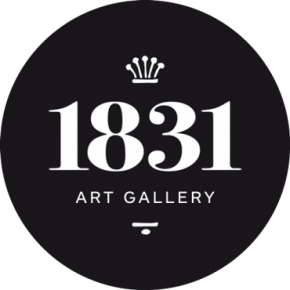
1831 Art Gallery Paris
6, rue de Lille – 75007 Paris
Tél. : +33 (0)1 75 51 78 68
Email : hello@1831artgallery.com
© 2020 – 1831 ART GALLERY – Legal notice
